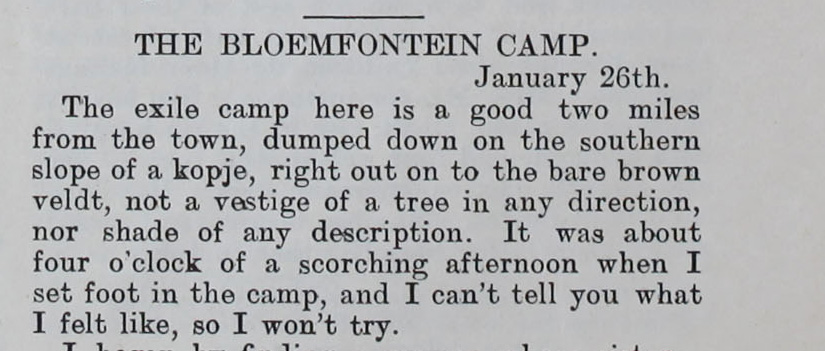
THE BLOMFONTEIN CAMP
January 26th.
The exile camp here is a good two miles from the town, dumped down on the southern slope of the kopje, right out on to the bare brown veldt [open uncultivated land], not a vestige of a tree in any direction, nor shade of any description. It was about four o’clock of a scorching afternoon when I set foot in the camp, and I can’t tell you what I felt like, so I won’t try.
Look at Source 8.
Extracts 8a-d from a report ‘To the Committee of the Distress for South African Women and Children’, compiled and written by Emily Hobhouse to investigate the mistreatment of those held in British camps, which includes reports and letters after visiting many of them, 1901, Catalogue ref: WO 32/8061
The latter stages of the war had descended into guerrilla warfare, and refugee camps had initially been set up to shelter civilian families. The British policy, under Lord Kitchener, of burning farms and homesteads to prevent the Boers from accessing supplies soon resulted in an influx of civilians into these ‘concentration camps’ or refugee camps. In total, forty-five camps were built for Boer internees, and an additional sixty-four were built for black Africans. It is estimated that 26,000 Boer women and children died, as well as over 14,000 black inmates, mainly as a result of disease and malnutrition.
- What do these extracts reveal about living conditions in these camps?
Read again those extracts which relate to individuals/families in camps. Explain the following:
- Why were they brought to the camp?
- What had they done?
- Were other members of their family directly involved in the war in some way?
- What was the state of their health whilst in the camp?
- How does this system of ‘concentration camps’ represent a war against civilians?
- What can be inferred about the impact of the war against the civilians of South Africa in terms of (a) its economy (b) its population (c) Boer fighters?
